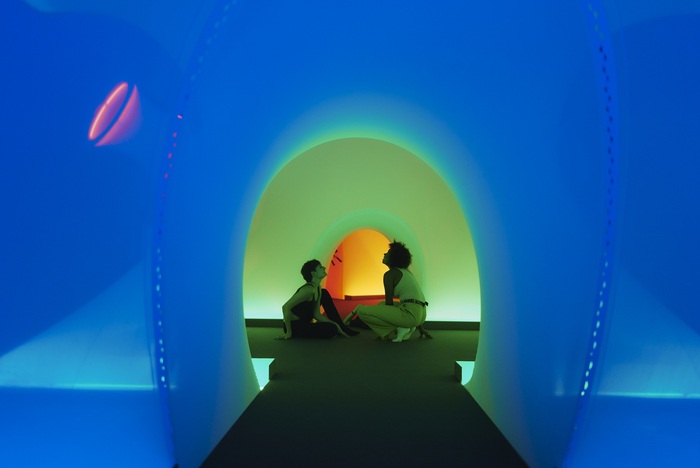For several years the clitoris, the female pleasure organ, has gained prominence in medicine, sexology and popular culture.
The rectification of its entire structure and not just its visible part (the glans) is due to the work that the Australian urologist
Hellen O'Connell
published in 2005. But this was only the first step.
O'Connell confirmed in an interview with the Sydney Morning Herald in 2018 that a good part of her pioneering work consisted of recovering and deepening the studies that the German doctor
Georg Ludwig Kobelt
did in 1844 on the clitoris and its internal structure.
Now, different investigations seek to provide more clarity on this organ that, compared to its counterpart, the penis, is far from reaching it as an object of study in the specialized literature.
According to an article published in March in The
Journal of Sexual Medicine
, there are 53,312 studies on the penis in the PubMed repository from 2002 to 2022 compared to 2,571 on the clitoris.
The article, titled
Clinical implications of the historical, medical, and social neglect of the clitoris
, was written by physicians
Blair Peters
and
Maria Uloko
.
Within their conclusions, the specialists write: "The defense of the clitoris is growing and must continue to do so. The so-called orgasmic gap exists for a reason."
"Neglecting it has hidden the knowledge and tools people need to unlock their sexual fulfillment," they add.
The German physician Georg Ludwig Kobelt (1804-1857) provided outstanding services to the female anatomy.
His book "The Male and Female Voluptuous Organs of Man and Some Mammals" was published in 1844 and includes this illustration.
Peters and Uloko had already hit the headlines of various world media months ago, after they published another study estimating that the clitoris has more than 10,000 nerve endings.
That
paper
, spearheaded by Peters, a surgeon who specializes in gender-affirming surgeries, was conducted at the Oregon Health and Science University in the United States.
Blair Peters, physician, surgeon, and author of a study that counted the number of nerve fibers in the clitoris.
(Photo courtesy of OHSU, Oregon Health & Science University)
"I had seen so much discussion about clitoral nerves, and the fact that this had never been truly evaluated in humans was surprising to me, given the amount of educational research and attention given to penile function in the medical field. Once you see inequality, your eyes open forever," he replied to
Clarín
via email.
For nearly a year, Peters and his team collected, analyzed, and drew conclusions about the innervation of the organ.
Small biopsies - about 5 millimeters - of seven trans-masculine patients who were going to undergo a phalloplasty, a complex surgical procedure that consists of creating a penis using prostheses or the patient's own tissue, were passed through the microscope.
The study has limitations, but it opens the door to much more information about the clitoris and how to preserve its sensitivity.
The surgeon and researcher explains that the estimate of 10,280 nerve fibers in the clitoris reveals
"how densely innervated" the organ is in relation to its surface
.
In contrast, he points out that the median nerve of the hand—responsible for providing sensation to most of the hand—has 18,000 fibers.
Magnified cross section of the dorsal nerve of the human clitoris.
Each dark blue dot within the larger blue circles represents an individual nerve fiber of a dorsal nerve.
(Photo courtesy of OHSU, Oregon Health & Science University)
For
Silvina Valente
, head of the Sexuality service at the Hospital de Clínicas and president of the Argentine Society of Human Sexuality (SASH), more than the exact number of nerve endings, what is essential for the general public is "to understand that the clitoris is
the effector and emitter organ of orgasm
, not the vagina.
Along the same lines,
Ella Valente anticipates that she has been carrying out studies on the vascularization
(formation and development of blood vessels) of the organ.
The medical community has already ruled on different editions of manuals that minimized or ignored the clitoris when representing the internal and external structures of the genital tract of people with a vulva.
Peters, for his part, highlights the role that his trans and gender diverse patients have played in his research, he says: "My greatest hope is that these findings encourage us to question what we think we know. Much of medicine and science is is affected by societal biases. What is studied and how it is studied was affected by biases at the time the work was done. Vulvar sexual health and
sexuality in general
have been taboo for a long time."
3D model of the complete structure of the clitoris.
(Photo: illustration Shutterstock)
Voices calling for more research and information to the general public about this neurovascular organ also come from the art world.
Artist
Sophia Wallace
is one of the most prominent and her project "Cliteracy" aims to "literate" people about the real and complete structure of the clitoris through manifestos and sculptures of different sizes.
Access to reliable information also became the mission of the American journalist
Zoe Mendelson
and the Mexican illustrator
María Conejo
.
In 2017 they created the bilingual website "Pussypedia".
(N. de la R.: "Pussy" is a term in English whose regional equivalent in Spanish would be "c*ncha")
.
In October 2022, Larousse published it as a book under the same name.
Divided into 32 chapters, it is a popular text with an irreverent and informal tone whose main objective is to bring reliable scientific information on the vulva, sexuality and health to any reader.
"We wanted to democratize the information that I found hidden in those newspaper articles and academic studies," Mendelson writes in the foreword.
Mariana Rincón
has seen this curiosity
firsthand in her more than twenty years of experience as an expert in sex toys.
Rincon, in charge of
Buttman, the largest erotic and sexual well-being store in the country, tells
Clarín
that "people have evolved a lot when buying, in fact, when they arrive they say if they want a clitoral stimulator, if they want it to vibrate, let it be small, the word 'clitoris' is totally normal".
Under the title of "player", she does not hesitate to analyze that the presence of popularizing sexologists such as
Alessandra Rampolla
in the mass media enabled discussions and "normalized" sexual health as a key issue that does not have to be hidden.
How to stimulate the clitoris: what to do and what not to do
Vibrators are one of the most popular clitoral stimulation toys.
(Photo: illustration Shutterstock)
Lucía Báez Romano
, psychologist, sexologist and member of the Argentine Urology Center (CAU), explains to Clarín what we must take into account when exploring and stimulating this organ.
First of all, the specialist stresses the importance of exploring without shyness "your genitals to be able to know your own vulva, carefully open the labia majora, distinguish them from the labia minora, look in a mirror to know where the clitoral glans is located, sometimes it can be confused with the place of the urethral orifice".
If the person is going to masturbate using sex toys, Báez (on Instagram, @luciabaezromano) points out that it is essential to "go from low to high" when stimulating the vulva with vibrators, suckers or any other sextoy
.
In addition, the sexologist indicates that, whether alone or with a partner, although it is well known that "the clitoris is the propellant of the orgasm" thinking only about stimulating it while waiting for that result is not the most convenient.
You have to remember, she says, that orgasm appears due to a combination of factors: relaxation, gradual stimulation, rapport and sensuality.
"We must avoid going directly to the clitoris, it is not clearly touching the clitoris as if it were a bell, we have the sensitivity of the whole body and, if the couple agreed that there is penetration -not all sex is coital- understand that "When it is stimulated, the clitoris experiences vasodilation, as happens with the penis when it is erected, but that takes time. In addition, we do not always have orgasms and that does not rule out the possibility of pleasure," adds Báez.
Neither clitoris nor sexual jouissance are already forbidden terms.
They are named, displayed and further investigated.
Rincón (on Instagram, @juguetologa.ar) remembers the days when she carried lingerie, a variety of toys and oils in "a little suitcase" for "tupper sex" meetings, gathered by no more than 25 people who, in a house or a bachelorette party, they were encouraged to ask and buy.
Now, she says, most of them have a "round trip" with the vendors, without so much shame, "as if you were buying a pair of shoes."
look also
What are the Chinese balls used by Guillermina Valdés and what are they for?
Generation Z and bonds: freer and more sincere when relating?
Love and bonds in the era of the "swipe": a promise or a fantasy?
International Condom Day: 5 curiosities that perhaps you did not know about the condom









